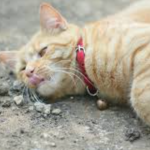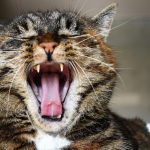As the festive season rolls around, homes often transform into havens of holiday cheer adorned with an array of decorative plants. While these embellishments add flair, they can pose potential dangers to curious feline friends. It’s crucial to understand which holiday plants might be hazardous to cats and how to prevent accidental ingestion.
1. Lilies
Lilies, including Oriental, Asiatic, Easter, and roselily varieties, hold an allure but are perilous for cats. Even daylilies (Hemerocallis sp.) can cause severe kidney damage or failure if consumed. Immediate vet attention is crucial if your cat encounters any part of these plants, their pollen, or vase water.
2. Christmas Trees
Live pine, fir, or artificial trees pose risks if your cat nibbles on the needles. Both types can irritate the gastrointestinal tract, causing vomiting, diarrhea, or, in severe cases, intestinal blockages requiring veterinary intervention.
3. Yew
While sporting attractive red berries, yews can lead to poisoning in cats if they ingest any part except the red flesh of the berry. Symptoms include vomiting, diarrhea, seizures, and heart irregularities, necessitating immediate veterinary care.
4. Holly
Featuring vibrant red berries, holly is common in wreaths and garlands. Ingestion can cause mild vomiting or diarrhea in cats. Larger berry consumption might lead to severe gastrointestinal upset or mobility issues.
5. Mistletoe
With American and European varieties, mistletoe ingestion can result in vomiting, diarrhea, or appetite loss. European mistletoe poses additional risks of abnormal heart rate and blood pressure.
6. Poinsettias
Potted or decorating wreaths, poinsettias can induce mild to severe vomiting in cats. Persistent vomiting warrants veterinary attention.
Handling Potential Ingestions
Should your cat consume any of these plants, seek immediate guidance from Pet Poison Helpline (855-764-7661). Ensure the plant remains for identification but out of your cat’s reach. Gently clean any residue off your cat’s fur to prevent further ingestion while grooming.
Addressing Emergencies
For severe signs like reduced responsiveness, breathing difficulties, or seizures, rush your cat to an emergency vet. Identifying the plant involved aids in tailored medical advice.
A Safer Season for Cats
Awareness of common holiday plant risks empowers pet owners to safeguard their feline companions. If concerned about plant ingestion, swift action and expert advice from resources like Pet Poison Helpline ensure a safe and merry season for your cat.




